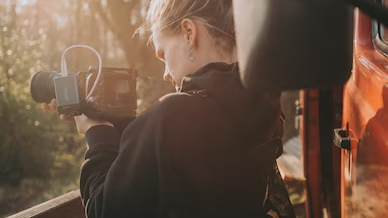Giving a compliment is a great way to show your appreciation for someone’s work. When it comes to photography, there are a few things you can keep in mind to make sure your compliments are well-received and appreciated. Here are a few tips on how to give a compliment on photography:
1. Be specific about what you like.
When you’re specific about what you like, it shows that you’ve taken the time to really look at the photo and appreciate the elements that make it great. For example, instead of simply saying “That’s a great photo,” try “I love the way you captured the light in that photo.”
2. Avoid general comments.
General comments like “good job” or “nice work” can come across as insincere or even trite. If you want to give a genuine compliment, take the time to say something specific about what you liked about the photo.
3. Be sincere.
Sincerity is key when giving any kind of compliment. If your compliment sounds forced or fake, it will likely not be well-received. When in doubt, err on the side of saying less rather than more.
4. Avoid giving criticism disguised as a compliment.
When you’re critiquing someone’s work, it’s important to be tactful and constructive. However, when you’re complimenting someone’s work, there’s no need to nitpick or point out flaws. Keep your comments positive and avoid anything that could be construed as criticism.
5. Keep it short and sweet.
A long, drawn-out compliment can come across as insincere or even overwhelming. When it comes to photography, a short and sweet compliment is often the best way to go.

You can improve the likelihood that people will acknowledge and value your compliments on photography by following the advice in this article.
Complimenting a photographer is an art form, and there are a number of ways to compliment your work. Complimenting a tool, for instance, is inappropriate. Instead, focus your compliment on the subject of the photo and highlight something you find beautiful about it. Complimenting a photo with words like “great image” or “excellent picture” is not a proper compliment.
It is a great method to communicate your admiration for a photographer’s work to provide them positive feedback in the form of compliments. You may show that you appreciate their photography by taking the time to thoroughly look at their work and complimenting them in specific ways. This will show that you value their work.
Condescending compliments on photography

If you want to give a compliment on someone’s photography, it’s important to remember that a compliment should never be condescending. The goal of complimenting a photograph is to highlight the skill or item that was used to take it. However, there are certain ways to avoid coming across as condescending.
Instead of complimenting the camera, you should praise the photographer’s eye for detail or his or her use of lighting. While complimenting a camera is a valid compliment, it’s not a compliment for the photographer. Instead, a compliment is an expression of enjoyment and respect. The photographer is a professional.
A good way to start off a compliment is by mentioning how you feel about the photo. For example, “This photo makes me feel happy” or “I love the way this photograph captures the light.” You can also mention what you like specifically about the photo. For example, “The colors in this photo are beautiful” or “I love the way you composed this photograph.”
Be genuine when you’re giving a compliment to someone else. Do not give a compliment for the sake of courtesy alone. The photographer will be able to determine whether or not you are being sincere in your response.
Finally, don’t forget to say thank you when the photographer accepts your compliment. A simple “thank you” goes a long way in showing your appreciation.
Words used to describe a session of photography

There are many different words used to describe a photography session, and understanding the terminology can help you achieve your goal of creating a beautiful photograph. However, photography terminology can be confusing, especially for newcomers. Thankfully, Luminar photo editing software is available to assist you in learning these terms.
Bokeh, for example, is the aesthetic quality of the out-of-focus areas in a photo. Bokeh can be either lightly blurred or heavily out of focus. When a photographer creates a photo, the out-of-focus parts look soft and beautiful.
Other terms used to describe a photography session include shutter speed and aperture. Shutter speed refers to the amount of time a camera shutter is open. The higher the shutter speed, the less time the camera needs to expose for light. Using a slower shutter speed creates a motion blur in the background while keeping the subject relatively sharp.
Another term used to describe a photography session is “depth of field”. The depth of field refers to how much of an image is in focus. Generally, a camera will focus on a point on a subject, and the rest of the subject and background are in focus. This technique is commonly used to capture portraits, where the background is softer than the foreground.
Composition and framing are also terms used to describe a photo session. Good composition means composing close to the subject. A poorly composed photo will look unfocused, haphazard, and uninspiring. Good photographers can deviate from these rules, but they should follow the general rules of composition.
Framing is another term used to describe a photography session. When you frame your subject, you’re using the environment around your subject to create a more pleasing photo. For example, you can use a window frame to add depth to your photo or use doorways and archways to frame your subject.
Luminar photo editing software is a great tool to use when you’re trying to understand different terms used to describe a photography session. With its help, you can quickly and easily edit your photos to achieve the perfect shot.

